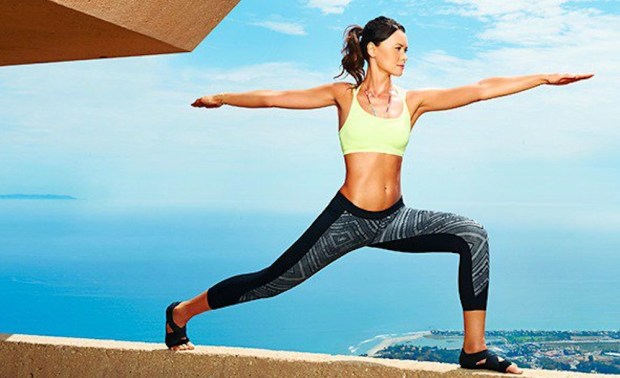Fabletics And Athleisure’s Growth Future

Out of almost nowhere, athletic wear and athleisure clothing — yoga pants, specifically — took over American women’s fashion. While about the same number of people are regularly working out as have ever been, dressing like a gym rat is the trend that seems to have become a lifestyle.
And like anything that goes up suddenly, the predictions about its inevitable decline become standard.
“Athleisure is over” has been making the rounds as a slogan for at least six months. Chip Wilson, the man behind the progenitor of the athleisure trend Lululemon, said as much last May, and he is far from alone — Women’s Wear Daily and New York magazine both agreed that the bubble is beginning to look perilous.
As it turns out, there are only so many $300 leggings even the most dedicated athleisure wearer can buy before they start wanting a pair of jeans, and so fall 2016 was the first time in several years looking to by denim than anything else.
But despite predictions of doom — and some notable dips at the top of the market (home of the $300 leggings) — athletic wear continues to be a growth business. Activewear sales rose 16 percent in 2015, compared with a 2 percent gain in total apparel sales — and strong growth attracts all kinds of interest. Brands from Walmart to Gucci have athletic wear lines — not to mention the ever-lengthening list of celebrities getting in on the game.
Celebrities like Kate Hudson, whose Fabletics brand has gone from zero to 60 in a rather abbreviated three-year timeframe. But Fabletics’ goal is a bit different than the more vanity-project celebrity brands out there — and has bigger ambitions.
Fashion Activewear For All
The founding idea with Fabletics is that consumers should be able to get fashionable activewear for non-designer prices.
“I’ve lived in activewear my entire life,” Hudson told Entrepreneur. “And I just didn’t believe that a pair of high-quality yoga pants had to cost that much. The idea behind Fabletics was really to make fitness and fashion accessible for everyone.”
And while Fabletics prices aren’t low — leggings run in at about $65, so a shopper could certainly pay less at Walmart or Target — the site is also designed around discounting and deals. Value-oriented customers can, for example, shop the $15 outfit offers if they’re looking to ease into high-fashion athletic clothing.
Also as part of its efforts to pursue wider accessibility, Fabletics is not just a digital brand or label imprint — it is actually moving to become a brick-and-mortar retail force in its own right. Currently operating 18 locations, 2017 is slated to be a growth year for the brand that will see it nearly double its brick-and-mortar locations nationwide by opening a dozen new stores. Each store is about 2,200 square feet.
“The store was designed to enhance our overall brand experience, inviting customers in to touch, feel and see the high-quality fabrications, latest innovations and newest designs, while making it as easy as possible for them to shop the way they like,” said Fabletics Senior Vice President Dustin Netral.
Building A Smarter Personal Experience
When customers enter the Fabletics site, they are prompted to take a short style quiz before commencing their browsing. The quiz is meant to quantify customer tastes and thus improve the recommendations the site can make.
As an experience booster and consumer perk alone, it works — customers generally have a high opinion of Fabletics’ ability to match them with the right goods. But the data does more than allow Fabletics to serve the individual customer better — it also allows the company to better optimize their production schedule entirely.
“Thanks to our direct relationship with the consumer, we are also able to use the gathered data to de-risk the fashion space,” said Adam Goldenberg, cofounder and CEO of TechStyles, Fabletics’ parents company. “We can forecast inventory demand at 95 percent accuracy, eliminate overproduction and pass the savings back to our customers.”
That predictive capacity combines well with Fabletics’ back-end vertical integration — which allows them to go from product design to full production in only 8 weeks time.
Despite predictions of forthcoming doom and gloom, there is still a rather intense race (pardon the pun) to capture the athleticwear spend of Americans, who seem to remain on the hunt for that perfect pair of yoga pants for the day they actually take up yoga.
And while Fabletics is one of many competitors, it is taking a different and much more comprehensive approach to capturing the market than the score of other brands out there. It may not be enough to win, but it should certainly give their competitors a workout.
